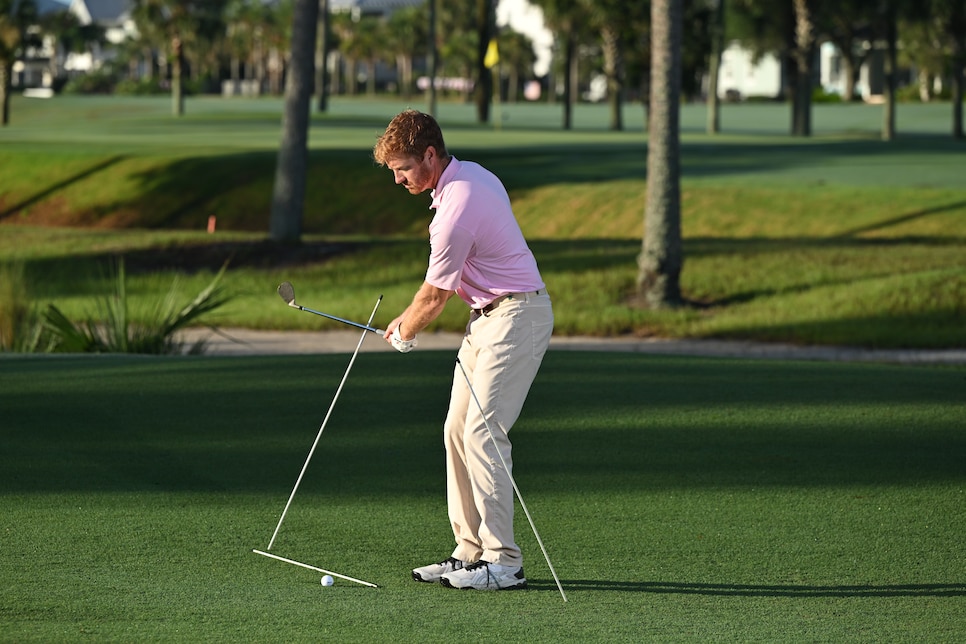Good chippers often have a longer backstroke than through-stroke. The clubhead falls gently down onto the back of the ball and finishes low to the ground, just brushing the turf.
This creates consistent ball-first contact—no chunks—and makes it easier to control the distance of chip shots.

JD Cuban
Here’s an image I use with my students to help simplify the basic chipping stroke and ensure solid contact. Take a very narrow stance with the top of your spine tipped toward the target and the ball back, just inside your trail heel. Now picture a wall outside the toe of the club at address, and swing the clubhead up and down this imaginary wall into impact, finishing low to the ground. It’s OK if the club runs into the ground, so long as the ball is back in your stance.

JD Cuban
A simple way to practice this at home or on the range is to stick an alignment rod in the ground along your extended target line and angle it toward your trail heel. Let’s call this your “wall.” Place a second rod about a foot in front of your front leg, angled toward your toes. Hit chips with the club riding up and down the first rod (top image) and stopping short of the second one (above). Make sure your hips turn to face the target at the finish. Once you can make this motion your own, you’ll be hitting your chips solid and getting them to the hole.
Jackson Koert, a Golf Digest Best Young Teacher, is director of instruction at Atlantic Beach (Florida.) Country Club.
Main Image: JD Cuban









